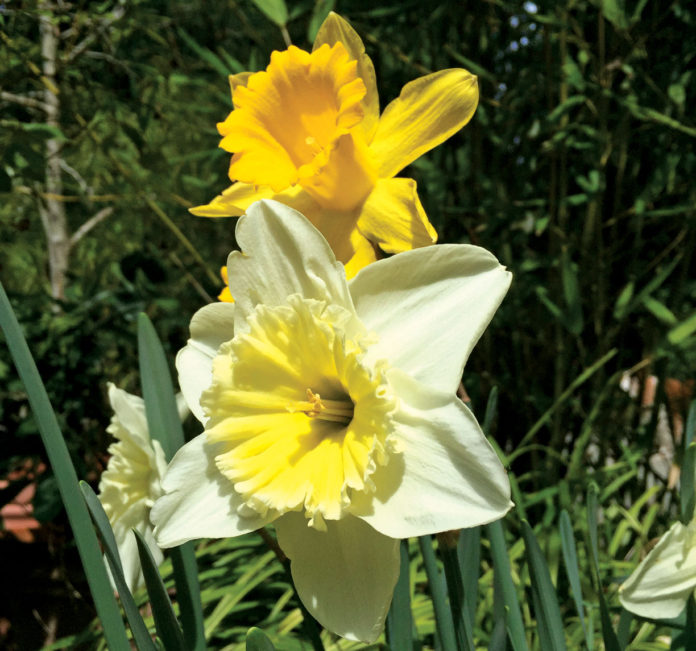Always on the lookout for potential problems in my garden, I can use all the help I can get. Solutions are out there. One of my go-to websites that I use to diagnose those problems is UC Integrated Pest Management or http://ipm.ucanr.edu. You can look up just about anything that may ail you in your garden. As a test, I went to the Plant problem diagnostic tool for Home Garden Turf and Landscape. Talk about a rabbit hole. I was on their site for hours looking up stuff. Try it. Your garden will thank you.
The daffodils are blooming. Will spring be early this year? When will I no longer need to worry about the danger of frost? How much is climate change affecting our natural world? We can all remember years when there was little rain in January and February and it feels like the Bahamas around here. Then there’s this year. The rainy season is upon us. But what are the plants around here doing? Leafing out early? How about those invasive plants around your yard? Look to phenology indicators to give you some insight.
Phenology—not to be confused with phrenology, which claims that bumps on the head predict mental traits—is the study of key seasonal changes in flowering times, emergence of insects and migration of birds from year to year. When do they occur each year? Phenology is a real science that has many applications. In farming and gardening, phenology is used chiefly for planting times and pest control. Predictions for fire season are based on factors pertaining to weather as well as plant growth. Certain plants give a cue, by blooming or leafing out, that it’s time for certain activities, such as sowing particular crops or insect emergence and pest control. Often the common denominator is the temperature.
Websites like USA National Phenology Network at usanpn.org offer lots of information on the subject. The US Global Change and Research Program released the first 14 indicators of climate change. Among these is the Start of Spring indicator on this website, which reflects the accumulation of heat sufficient to initiate leafing and flowering in temperature sensitive plants. Your own observations via Nature’s Notebook will help contribute to this research.
Indicator plants are often used to look for a particular pest and manage it in its most vulnerable stages. They can also be used to time the planting of vegetables, apply fertilizer or prune. Here are some common garden plants and what they indicate:
When daffodils begin to bloom, sow peas.
When dandelions bloom, plant spinach, beets and carrots.
When lilac leaves are the size of a mouse’s ear, sow peas, lettuce and other cool-weather crops.
When lilacs are in full bloom, plant beans.
Once lilacs have faded, plants squash and cucumbers.
When apple trees shed their petals, sow corn.
When dogwoods are in full bloom, plant tomatoes, peppers and early corn.
When bearded iris are in bloom, plant peppers and eggplants.
When locust and spirea bloom, plant zinnia and marigolds.
When forsythia and crocus bloom, crabgrass is germinating. When this happens the soil temperature at a depth of 4 inches is 55 degrees. Treat with an organic pre-emergent.
When crocus bloom, prune roses and feed your lawn.
Mexican bean beetle larvae appear when foxglove flowers open.
Record your own observations. Another great site is National Sustainable Agriculture Information Service at http://attra.ncat.org. Sites like these can also help you design orchards for pollination and ripening sequence, design for bee forage plantings, design perennial flower beds and wildflower plantings as well as plantings to attract beneficial insects and enhance natural biological control. How cool is that?
Jan Nelson, a landscape designer and California-certified nursery professional, will answer questions about gardening in the Santa Cruz Mountains. Email her at ja******@*ol.com, or visit jannelsonlandscapedesign.com.











